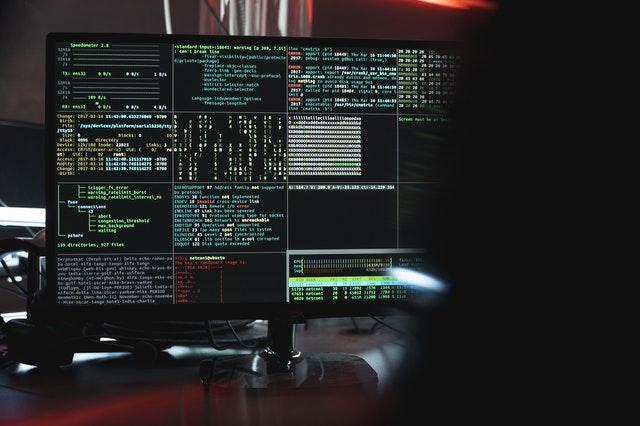
We live in an increasingly volatile geopolitical landscape. There’s a greater likelihood of a major crisis or conflict in our region in the next 10 years than at any point in decades. From a direct military attack on Australia to a malicious cyberattack on our critical infrastructure or a natural disaster exacerbated by the impact of climate change, these risks can rapidly become crises.
Australians have witnessed the concurrent and compounding nature of catastrophes in the 21st century. We didn’t predict the numerous and disparate effects of the Covid-19 pandemic; nor, despite warnings, did we foresee the tragic consequences of the Black Summer bushfires—all economic, political and social shocks for the nation.
While it’s always been important to prepare for changes, challenges and crises, the events of the past two years have brought a new urgency to this task. Our responses to future crises can’t be left to chance. They must be practised, considered and well executed if we’re to maintain our security and prosperity.
Australia can use simulations to rehearse such events. A simulation has been described as an ‘open-ended evolving situation with many interacting variables, where the goal for all participants is to each take a particular role, address the issues, threats, or problems that arise in the situation, and experience the effects of their decisions’.
Such exercises are used by governments and emergency management organisations around the world to prepare for crises. In 2015, US Deputy Secretary of Defense Bob Work urged the reinvigoration of wargaming, highlighting its ability to improve our understanding of complex, uncertain environments and the changing character of warfare.
Consequently, the US military has shown a renewed interest in wargaming and simulation over the past five years. Similarly, in 2020, Britain established a Defence Wargaming Centre to purpose-design sessions for the Ministry of Defence and other government departments.
Simulation exercises were used in Australia in the lead-up the 2000 Sydney Olympics to stress-test security protocols. Significant changes were made to operational plans ahead of the games based on the insights harvested from those simulations.
The Australian Crisis Simulation Summit is such an exercise. The student-led summit brings together 70 future leaders from around the nation to participate in three advanced crisis simulations. Participants adopt the roles of ministers, advisers, strategists, bureaucrats and journalists. Across state, territory and federal jurisdictions, they work together to resolve an unfolding crisis.
State-of-the-art software emulates all aspects of modern communication, allowing a control team to monitor activities. Simulated news websites, social media channels and a live news talk show keep the public informed and provide feedback to participants. The summit demonstrates what a sophisticated crisis simulation looks like in practice.
The Defence Department recently released documents in response to a freedom of information request that outline the crisis simulations it has conducted over the past six years. They revealed that the department conducted infrequent ‘facilitated discussions of plausible scenarios’, ‘board games’ and ‘table-top exercises’ using PowerPoint presentations to prepare our leaders for the uncertain future ahead.
Whilst the FOI request was narrow in scope and there are numerous examples of more sophisticated government-run simulations, it’s evident that such exercises are not given sufficient priority within government.
The bushfire royal commission recommended that Commonwealth, state and territory governments conduct multi-agency, national-level exercises to assess national capacity, inform capability development and coordination, and stress-test current capabilities to respond to natural disasters.
To act on this recommendation and to strengthen the nation’s preparedness, the government could consider establishing a simulation exercise capability. It could operate within the National Recovery and Resilience Agency and would conduct national-level exercises on forecasted threats and anticipated risks.
Multi-agency, cross-jurisdictional exercises will break down the siloed approach to simulation in government and could encourage the cross-pollination of ideas, build muscle memory and create situational awareness of vulnerabilities, potential consequences and resource requirements. Critically, they could help to build networks across society before a crisis occurs, forging trust and confidence between the people whom we rely on to respond.
The exercises should move beyond paper- or screen-based ‘facilitated discussions about plausible scenarios’. They must be hands-on, practical simulations that utilise the latest technologies and best-practice methodologies. Participants should feel the pressure and intensity of a real-life crisis and be encouraged to think outside the box about the kind of responses we must be prepared to carry out.
Situating this capability outside Defence would redefine the narrative of these exercises, expanding their scope beyond military dimensions and recognising that we must bring whole-of-nation responses to future crises. The branch operating this capability should be able to involve senior public servants, cabinet ministers, Australian Defence Force personnel, civil society organisations, journalists, critical infrastructure operators, private corporations and universities. Covid-19 has demonstrated that we all have a role in tackling a crisis.
As in a fire drill, the coordinating agency should be able to compel participation of stakeholders at a moment’s notice. Crises are unpredictable. Our rehearsals for such events must be, too, if we are to authentically prepare.
Individual exercises could be jointly funded by industry stakeholders, who have as much to gain as government. Privately owned critical infrastructure operators may soon need to comply with the Security Legislation Amendment (Critical Infrastructure) Bill 2020. If this bill becomes law, it will require these operators to conduct cybersecurity exercises to ensure that they have effective preparedness, mitigation and response strategies.
An agency operating at the interface between industry and government could coordinate the exercises, harnessing the resources of industry stakeholders, building collegiality and sharing lessons across private corporations, which may tend to help themselves before helping each other.
Australia must do more to prepare for crises. Clear-eyed, robust, nation-level simulation exercises using the latest technologies and best-practice methodologies will help achieve this. Such simulations are underutilised and underappreciated in Australia’s government, yet our AUKUS partners have already developed advanced capability.
Investing in a sovereign simulation capability will build confidence, strengthen resilience and prepare Australia for the next crisis.